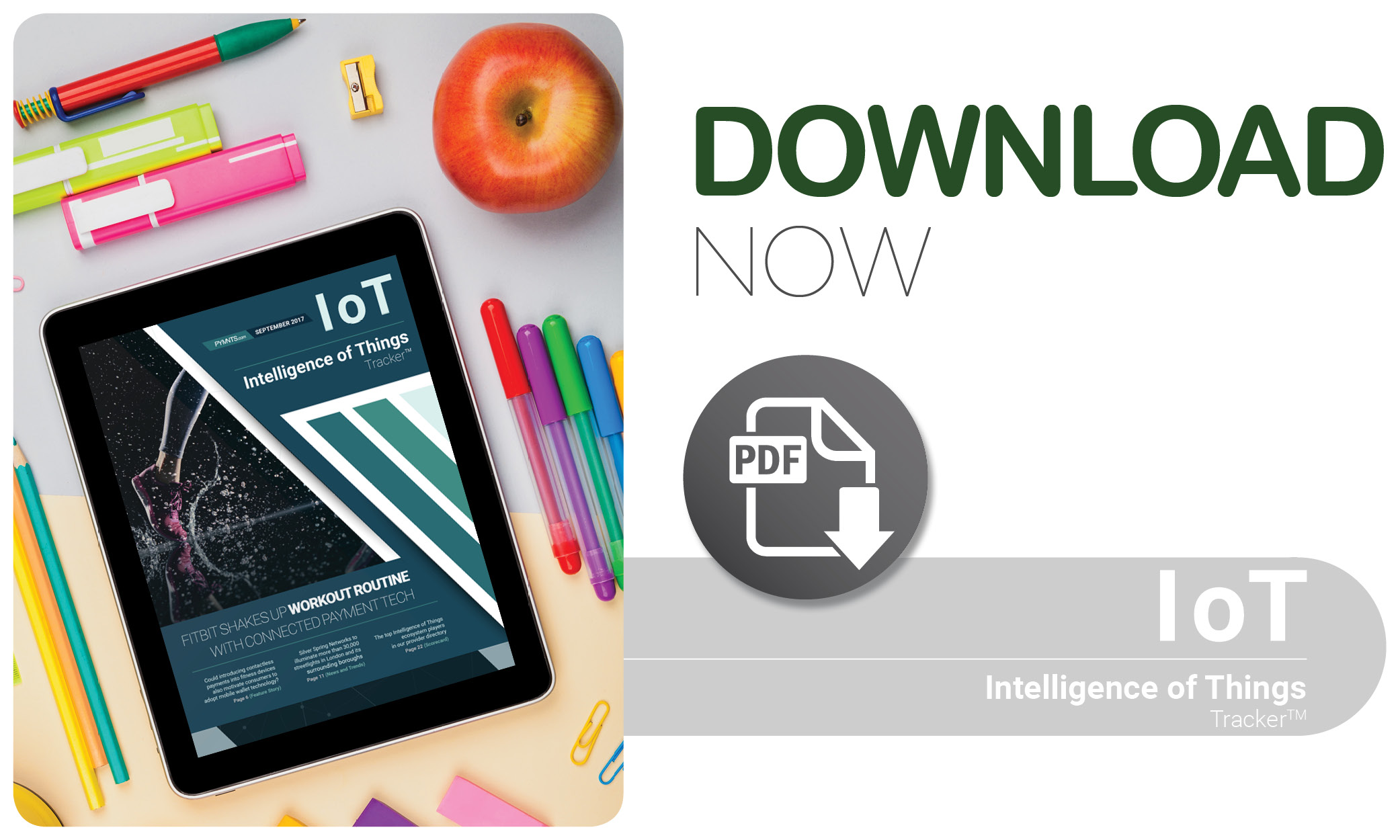A smartwatch can act as a personal trainer that motivates the user to reach daily exercise goals. And, as smartwatches have enjoyed consumer popularity, it seems that there are opportunities for the devices to add new capabilities and play different roles. When Fitbit’s latest smart device, the Ionic smartwatch, releases next month, contactless payment capabilities will be available as an integrated feature. But will it motivate consumers to take to mobile wallet payments the same way its predecessors have encouraged step counting?
The latest issue of the PYMNTS.com Intelligence of Things (IoT) Tracker explores news from around the IoT space, including smart city developments, virtual assistants and connected wearable fitness tracker devices, and a look at the potential future of wearable payments with the debut of the Fitbit Ionic.
Around the IoT world
When it comes to smart cities, some are ready to see the light — smart lighting, to be precise.
In London, for instance, smart lighting solutions provider Silver Spring Networks recently announced plans to help the city meet its energy savings goals by installing a smart lighting platform. With the solution in place, over 30,000 connected streetlights will be able to transmit data to each other using wireless mesh controls, allowing London city officials to monitor the performance of individual lights and make more informed decisions about maintenance and energy consumption.
Smart city lighting initiatives are also underway in the U.S., with a focus on simultaneously expanding wireless access. Wireless infrastructure provider American Tower and lighting solutions company Philips Lighting are working together on a “smart pole” to both improve urban communities’ access to wireless networks and expand the use of LED lighting in these communities. Philips said installing the smart pole and expanding wireless to urban areas can help public officials in these communities access a wide range of IoT benefits, such as improving emergency services and air quality monitoring.
Advertisement: Scroll to Continue
Taking the smarts inside, in the arena of home speakers, two virtual assistant superstars have put aside their rivalry and formed an unlikely partnership. Amazon’s Alexa and Microsoft’s Cortana recently announced that owners of either smart home speaker will be able to use the other’s capabilities using voice commands. With the partnership in place, Amazon users will be able to use their Echo device with prompts like, “Alexa, open Cortana,” to access organizational features like scheduling meetings or setting reminders. Microsoft users can say to their Windows 10 device, “Cortana, open Alexa,” and use the service to operate their smart home devices or purchase items from Amazon.
For the latest notable IoT headlines and trends, check out the Tracker.
Connecting Personal, Financial Health with Contactless Payments
Once strapped to a wrist, connected fitness trackers can nudge users to meet their exercise goals during a workout, burn a certain number of calories per day and track data like heart rates and sleep patterns. Now, add alleviating the pain and inconvenience of making payments with sweat-drenched cash or a bra-stashed credit card during a workout to the list of benefits these devices can offer.
For the September Tracker’s feature story, Lindsay Cook, head of devices for Fitbit, discusses the company’s new Ionic smartwatch, which will offer users a contactless payments option, and explains how this technology could give fitness fans a break from awkwardly carrying payment options during their routines, all while opening the wearable device maker to new global markets.
To read the feature story, along with rankings of more than 200 providers — including 10 new additions this month — download the September edition of the IoT Tracker.
. . . . . . . . . . . . . . . .
To download the September edition of the PYMNTS.com Intelligence of Things Tracker™, click the button below …
 About the Tracker
About the Tracker
The PYMNTS.com Intelligence of Things Tracker™ showcases companies that are leading the way in all aspects of the Intelligence of Things. Every month, the Tracker looks at what these companies are doing across the ecosystem and in several categories, including Personal, Home, Retail, Transportation, Wearable, Mobile, Infrastructure, Data and more.





